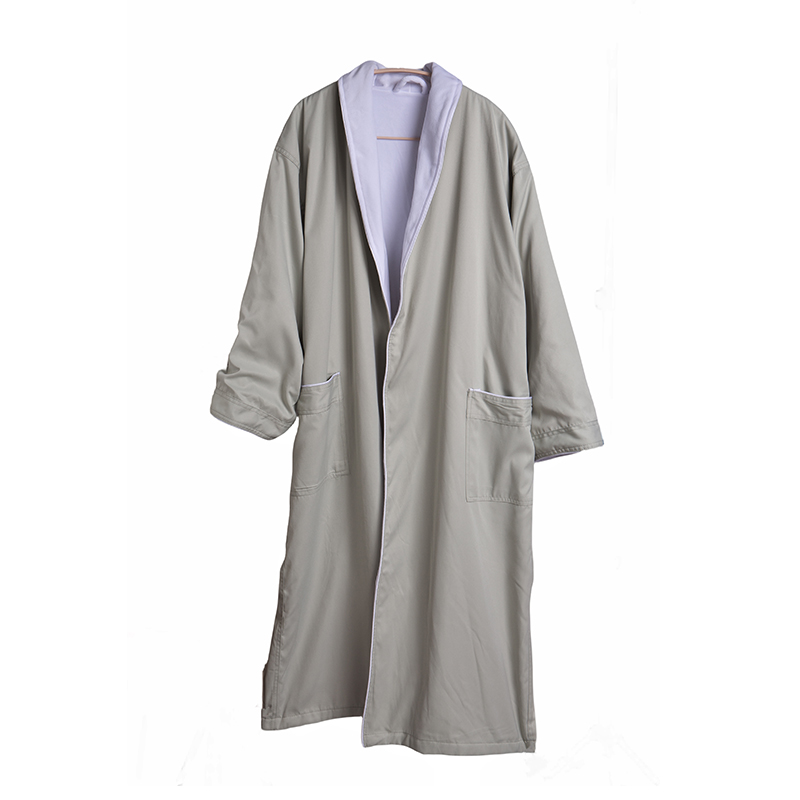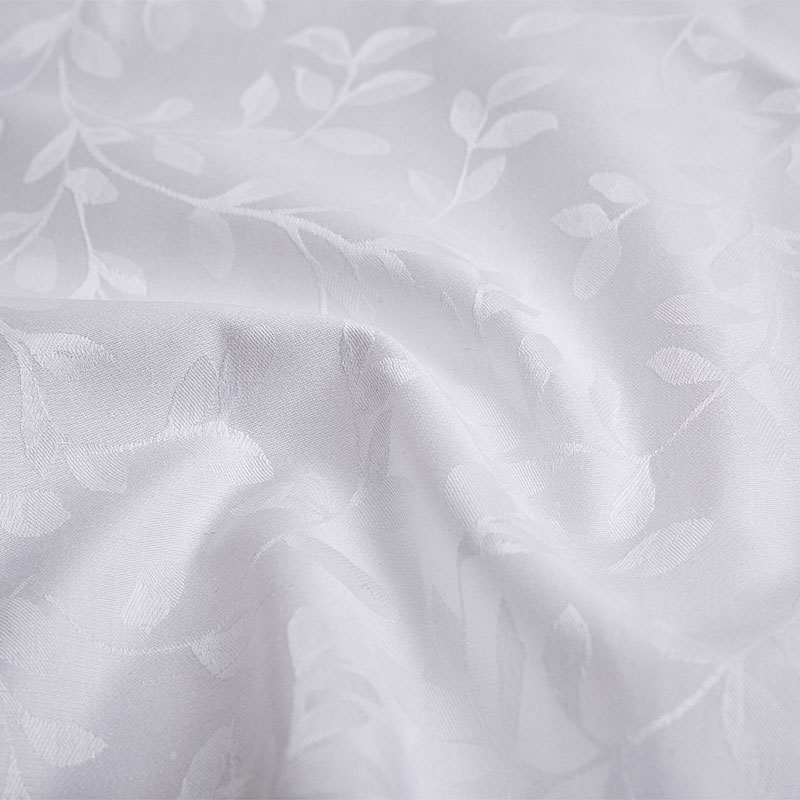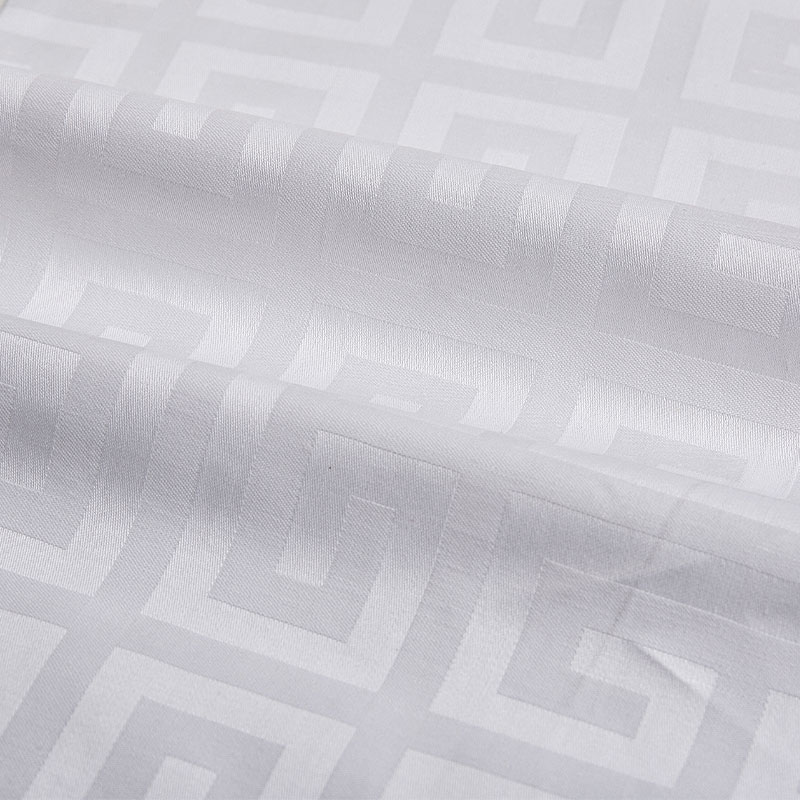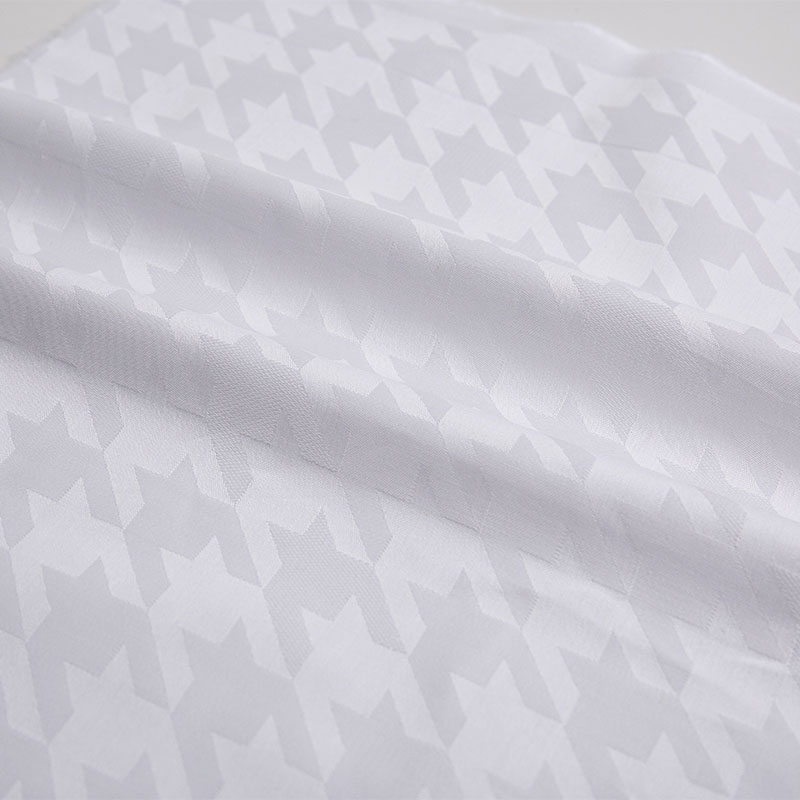Every detail is related to the guest's accommodation experience and the hotel's brand image for high-end hotels. As one of the textiles that are closest to the guest's skin in the guest room, the quality and durability of the bed sheet are of great concern. Among the many bed sheet materials and processes, the 300-count pure satin cotton white hotel bed sheet with high-density warp and weft interweaving has become the first choice of many hotel owners with its unique charm and excellent performance.
Warp and weft interweaving, this ancient and exquisite textile technique, has been rejuvenated in the manufacture of modern hotel bed sheets. Unlike the simple stacking of ordinary bed sheets, the 300-count pure satin cotton white hotel bed sheet uses 60 warp yarns and 40 weft yarns to form a unique grid structure. This structure not only gives the bed sheet a visual beauty, but also achieves a qualitative leap in physical performance.
The warp and weft yarns, one horizontal and one vertical, interweave with each other, just like the warp and weft network in nature, which is both tough and elastic. The dense arrangement of 60 warp yarns provides strong longitudinal support for the sheets, allowing the sheets to remain flat and straight when laid, and not prone to wrinkles or collapse. This support not only enhances the visual effect of the sheets, but also enhances the comfort of the guests invisibly. The clever interweaving of 40 weft yarns gives the sheets horizontal flexibility, making them stable while maintaining a comfortable and skin-friendly touch. This combination of rigidity and flexibility is the unique charm brought by high-density warp and weft interweaving.
The impact of high-density warp and weft interweaving on the durability of sheets is far more than just visual and tactile enhancement. More importantly, this interweaving method greatly enhances the density and firmness of the sheets, laying a solid foundation for the durability of the sheets.
First of all, the high-density interweaving makes every inch of the sheets closely connected and impeccable. This tight structure effectively prevents gaps and looseness between fibers, making the sheets less likely to deform and wear out during long-term use. Whether it is frequent bed-making operations or guests tossing and turning, it is difficult to cause destructive effects on the sheets. High-density interweaving also greatly enhances the ability of fibers to lock each other. During the interweaving process, closer connection points are formed between the fibers, which are like tiny locks that firmly fix the fibers together. This design effectively prevents slippage and shedding between fibers, thereby avoiding common problems such as pilling and loose threads. Even after multiple washings and uses, the sheets can still maintain their original integrity and beauty.
For hotel sheets, washing is an inevitable link. And high-density warp and weft interwoven sheets also show excellent performance in this link. During the washing process, whether it is machine washing or hand washing, high-density interwoven sheets can effectively resist the impact of water flow and mechanical force. Its stable structure makes the sheets less likely to deform and shrink during washing, maintaining their original shape and size. At the same time, high-density interweaving also makes it easier for the sheets to restore their flatness and gloss after washing, reducing the workload and time cost of ironing. The high-density interwoven sheets can still maintain their snow-white appearance and glossy silky feel during the washing process. This long-lasting performance not only improves the guests' accommodation experience, but also reduces the hotel's operating costs and replacement frequency.

 EN
EN English
English русский
русский Español
Español عربى
عربى
 Online Message
Online Message














